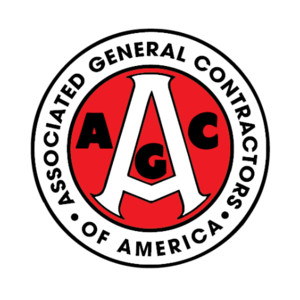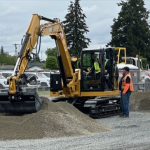Questions and answers: OSHA’s new silica rule imposes new regulations on many contractors
 The following article is from Matt Paxton, an attorney with Ahlers & Cressman. It originally appeared on the AGC of Washington website.
The following article is from Matt Paxton, an attorney with Ahlers & Cressman. It originally appeared on the AGC of Washington website.
On March 25, 2016, the Occupational Safety and Health Administration (“OSHA”) published its final rule on occupational exposure to respirable crystalline silica (the “Silica Rule”). Crystalline silica is a basic component of soil, sand, granite, and many other materials. Silica exposure is classified as a human lung carcinogen and can cause lung cancer, silicosis, chronic obstructive pulmonary disease, and kidney disease. Approximately 2 million construction workers nationwide are exposed to respirable crystalline silica in their workplace as a result of drilling, cutting, crushing, or grinding silica-containing material, such as concrete and stone.
Q: What is the Silica Rule?
A: Generally speaking, the Silica Rule reduces the permissible exposure limit for respirable crystalline silica to 50 micrograms per cubic meter (μg/m3) of air, averaged over an eight-hour shift (the “Permissible Exposure Limit”). Beginning June 23, 2017, the Silica Rule will require many contractors to begin using engineering controls to limit exposure, provide respirators when engineering controls cannot adequately limit exposure, limit worker access to high-exposure areas, develop a written exposure-control plan, offer medical exams to highly exposed workers, and train workers on silica risks and how to limit exposures.
Q: Does the Silica Rule affect me?
A: If your employees are exposed to respirable crystalline silica, the new Silica Rule may affect you. Activities involving minimal exposure, however, do not fall within the scope of the Silica Rule. The Silica Rule excludes construction workers’ exposure to respirable crystalline silica less than 25 μg/m3 of air as an eight-hour time-weighted average (the “Action Level”) under foreseeable conditions.
Employers seeking to be excluded from the Silica Rule should be prepared to demonstrate that its workplace conditions will result in exposure to respirable crystalline silica below the Action Level though objective data. The objective data can include air monitoring data from industry-wide surveys or calculations based on the composition of a substance, but such data must reflect conditions closely resembling your current operations. Alternatively, employers may conduct an exposure assessment through an industrial hygienist. The Silica Rule sets forth detail requirements for the exposure assessment, including sampling, testing protocol, accreditation and scheduling requirements.
Q: How do I comply with the Silica Rule?
A: In Table 1 of the Silica Rule, OSHA lists 18 different construction tasks that are presumed to be below the Permissible Exposure Limit if the employer maintains compliance with the specified engineering and work practice controls. Employers who follow Table 1 correctly are not required to measure workers’ exposure to silica. For example, if an employee is using handheld power saws, the employer is not subject to the Permissible Exposure Limit if the saw is (1) equipped with integrated water-delivery system that continuously feeds water to the blade, (2) operated and maintained in accordance with the manufacturer’s instructions to minimize dust emissions and (3) used with respiratory protection with a minimum assigned protection factor of 10 for all indoor shifts and all outdoor shifts longer than four hours.
Employers who do not use control methods on Table 1 must measure the amount of silica that workers are exposed to, protect the workers from respirable crystalline silica above the Permissible Exposure Limit, use dust controls, and provide respirators to workers when dust controls cannot limit exposure to the Permissible Exposure Limit.
Regardless of which exposure control method is used, all construction employers covered by the Silica Rule must also establish and implement a written exposure-control plan that identifies the tasks that involve exposure and methods used to protect the workers, provide employee training on the hazards of silica, designate a competent person to implement the exposure-control plan, restrict housekeeping practices that expose workers to silica, and offer medical exams every three years for workers who are required to wear a respirator for 30 or more days per year.
Q: What If I cannot limit exposure to below the permissible exposure limit?
A: Under the rule, if “feasible engineering and work-practice controls are not sufficient to reduce employee exposure to or below the [Permissible Exposure Limit], employers are required to supplement these controls with respiratory protection.” The employer must still implement all feasible engineering and work practice controls “even if these controls alone cannot reduce employee exposures” to the Permissible Exposure Limit. Infeasibility is a defense to an OSHA citation under the Silica Rule. However, the burden will be on the employer to prove that engineering or work-practice controls are economically infeasible (i.e. too expensive to implement and maintain) or technologically infeasible (i.e. absence of controls effective in reducing exposure).
Q: Is the Silica Rule enforceable?
A: Soon after OSHA published the Silica Rule, lawsuits were filed challenging the rule. Most major trade associations have challenged the rule – including the Associated Builders and Contractors, Associated General Contractors, and National Association of Home Builders – claiming, among other things, that the rule is based on bad science and that the prescribed limits cannot feasibly be attained. At the same time, unions have also sued OSHA – including the American Federation of Labor and Congress of Industrial Organizations – claiming that a lower Permissible Exposure Limit should have been adopted. It will likely take years before we know the results of these lawsuits, and it seems unlikely that implementation will be put on hold until the courts decide the issue. As a result, contractors should start preparing now.
Comment
OSHA’s On-Site Consultation Program offers free and confidential occupational safety and health services to small- and medium-sized business. Consultations are separate from enforcement and do not result in penalties or citations. To locate the OSHA On-Site Consultation Program, call 800.321.6742 or visit www.osha.gov/dcsp/smallbusiness.








